
Every childhood has its seminal moments. Incidents that sear your synapses -- you not only remember precisely where you were, what you were doing; but sensory bombardments rush back decades later, as if you've never left that age and time and place and feeling.
For many of us Kentuckians born in the Sixties, the evening of March 27, 1978 was an unforgettable highlight of our innocence. I still can picture myself in PJs, slipping in tube socks on the hardwood floor of my grandparents' living room, in one hand my prized UK Nerf basketball, the other, a huge blue foam finger.
And on the 25 inch TV screen...my Childhood Hero...who
just couldn't miss.
The 1978 NCAA championship game wasn't a blowout; but during most of the second half, Kentucky held a comfortable lead over (pre-Coach K) Duke. Only one matter of suspense: Would Jack "Goose" Givens -- in his ultimate collegiate game, on his most celebrated stage, in his finest forty minutes -- shatter Bill Walton's scoring record as he brought back a banner to his hometown?
Alas, the Goose totaled
only 41 points, three short of the Big Redhead, carrying the Cats to a six-point victory over the Blue Devils. But Givens' gutsy and graceful shooting exhibition would enchant a generation of hoops fans, and clear the floor for the following year's Bird/Magic Big Dance-off, shimmy-ing college basketball into a new stratosphere.
===
My Childhood Hero sits across from me on a brown leather coach in my law office in Lexington's Big Blue Building. I'm nine again, the age when I met the impossibly tall teenager at a Turfland Mall autograph signing. Around the Goose, I always regress into a jittery, giggly tween.
Behind him hangs the image of #21 at age 21: The front page of the
Lexington Leader recounting "Givens' Greatest Game." The paper had been tacked to my bedroom wall for years; it's now is framed in cherry-wooden glory, a daily reminder of my own springtime.
"It feels just like yesterday," Givens looks back at the headline and wistfully shares. "Especially around tournament time, you put yourself in the place they're in, those nervous feelings come back, the preparation, the mental approach, the practicing and more practicing you do to be confident, at the top of your game."
Givens intimately understands the pressures faced by Cal's current Cats. By '78, the Big Blue Nation had been starving for two decades for a fifth championship; Givens' veteran squad, the preseason #1, was the vessel in which we had invested our hopes to restore the Rupp Era's tradition and glory.
By game time, Givens had exorcised any anxiety: "I was confident that we were the best team. I was confident that we were prepared for Duke. I was confident that they would have a difficult time matching up against us." As mental performance Coach to Champions
Jim Fannin describes it, Jack Givens was "in the zone": His mind was clear of all distraction; it was time for intuition, instinct and muscle memory to take control.
In fact, Givens had no idea that he was poised to set any record: "Everything was happening so fast. I knew I had made some shots -- when I hit one from the corner that grazed off the side of the backboard and went in...I felt the basket was pretty large that evening," remembers the Goose. "But I had no clue how many points I had scored. I was just doing everything possible I could to win."
The only inkling of suspicion came as time was expiring. When Duke had narrowed a double-digit lead to an uncomfortable four, Coach Joe B. Hall gave his starters an admonition: "The only person I want shooting the ball is Jack." Goose was confused; Hall had never said anything like that before: "I wasn't interested in shooting -- I wanted to run out the clock and get the game over with." Instead, the game ended with another signature moment: a slam dunk by James Lee, Givens' childhood friend. Walton could keep his record; Givens captured his title.
"That was an incredible, extraordinary moment," Givens remembers. "And it was just the beginning...It was a constant blur...It didn't stop for months. A barnstorming tour of the state, autograph sessions...It was fantasyland, you were in such high demand. Everyone wanted a piece of you."
===
The lofty pedestals upon which we place our Childhood Heroes can often prove hazardous, especially when these young men confuse athletic adulation with personal entitlement. But this Goose knew better than to fly
too close to the sun; his past was too persistent a prologue.
The sixth child of ten, Jack was raised in Lexington's Bluegrass Aspendale housing project by a single mom who cleaned other peoples' homes. "Whenever I'm challenged, I just go back to my childhood, how I was raised, and how my mother sacrificed to have what we needed to get by," Givens explains. "We couldn't afford summer camps; I just played whatever sport was available to me...We were just happy to get by. The kids in my neighborhood did what we had to do to survive."
Jack sprouted up in the 9th grade, and starred at Bryan Station High School, where he earned his nickname from teammates who compared him to Harlem Globetrotter Reece "Goose" Tatum. (Jack at first hated the moniker that he cherishes today.) After college, a distinguished NBA career and two decades in Florida, he returned to the Commonwealth a living legend. "Any UK ballplayer is treated so special...It's hard not to go to your head," Givens contends. "But every time I need to get slapped into place, I remember back to my childhood, see how I was, and remember that thin line that leads from way back then until now."
Of course, Jack had also carried another burden, the weight of the time's paramount political and social struggle, one that had consumed the team, its fan base, and its critics for decades. It may seem today like a wholly different era, but remember that when Givens came to campus in 1974, it had been only 8 years since the all-white Rupp's Runts had lost to the first all-black championship starting lineup, and only 4 years after Tom Payne had finally integrated the Cats. While he credits upperclassmen like Reggie Warford for helping pave the way and mentor him as a freshman, the Goose was a transitional and transformational figure: the first black superstar, the first African-American All American to don Kentucky blue, the first man of color to see his jersey memorialized forever in Rupp's rafters.
Givens did indeed face some racial blowback -- from the African-American community. "I never imagined I'd go to school at UK because at the time, that's not what black kids did," explains Jack. "And when Kentucky came recruiting, while I got plenty of support from my church, neighborhood and friends, not everyone was happy...The Rupp legacy was a part of it for a lot of people...Some people weren't ready to change."
But when it came to white Kentuckians, Givens felt only warm embrace. "When I was at Bryan Station, people in the stands, from Hazard to Owensboro, were cheering for me, recruiting me to play at UK," the Goose recalls. "Coach Hall treated us all the same...The white stars like [Kevin] Grevey and [Mike] Flynn and [Jimmy Dan] Conner all picked us up and brought us along with them...The only thing I can remember Coach Rupp ever telling me was 'I'm glad you're here.'...For the fans, it was always about the common good, seeing all of us get along, and of course, most of all, winning."
===
Today, the Goose is working on a different kind of game changer, for some of the poorest -- and whitest -- counties in the country: the mountains of Eastern Kentucky. In early 2013, Givens approached Congressman Hal Rogers, offering his expertise and connections to help Rogers realize his vision of a fiber network spurring economic development in Appalachia. Rogers put him in touch with Governor Steve Beshear, his partner in the then-nascent
Shaping Our Appalachian Region (SOAR) initiative.
From those meetings came the Next Generation Kentucky Information Highway, an ambitious public-private partnership that will develop a more than 3,000-mile network of fiber optic cables, providing high-speed broadband and better cell phone service to the mountain region. With universal, affordable access to the Internet, Eastern Kentucky could create and capture 21st century jobs and high-tech industries that had been deterred by the impoverished region's remote geography, challenging topography and poor physical infrastructure.
And the guy who helped put it all together, who never forgot his humble roots, will help lead its implementation.
"I was so fortunate to be at the right place and the right time and know the right people," suggests Givens. "And now, we are going to be able to help our education system at every level, open the state for incredible business opportunities, replace lost coal jobs with high-tech, high-paying jobs in Eastern Kentucky...Certainly, with a project like this, the people of the state are the big winners."
===
It's a common recreational hazard for the Big Blue Nation to invest too much hope and promise and expectation into young athletes. But in his circular journey from youthful indigence to champion of economic opportunity, my Childhood Hero just might yet earn the faith that so many placed in him.
And in so doing, Jack Givens serves as a compelling example of the power of Kentucky basketball -- that when harnessed effectively, can truly move mountains.
 Every childhood has its seminal moments. Incidents that sear your synapses -- you not only remember precisely where you were, what you were doing; but sensory bombardments rush back decades later, as if you've never left that age and time and place and feeling.
For many of us Kentuckians born in the Sixties, the evening of March 27, 1978 was an unforgettable highlight of our innocence. I still can picture myself in PJs, slipping in tube socks on the hardwood floor of my grandparents' living room, in one hand my prized UK Nerf basketball, the other, a huge blue foam finger.
And on the 25 inch TV screen...my Childhood Hero...who just couldn't miss.
The 1978 NCAA championship game wasn't a blowout; but during most of the second half, Kentucky held a comfortable lead over (pre-Coach K) Duke. Only one matter of suspense: Would Jack "Goose" Givens -- in his ultimate collegiate game, on his most celebrated stage, in his finest forty minutes -- shatter Bill Walton's scoring record as he brought back a banner to his hometown?
Alas, the Goose totaled only 41 points, three short of the Big Redhead, carrying the Cats to a six-point victory over the Blue Devils. But Givens' gutsy and graceful shooting exhibition would enchant a generation of hoops fans, and clear the floor for the following year's Bird/Magic Big Dance-off, shimmy-ing college basketball into a new stratosphere.
===
My Childhood Hero sits across from me on a brown leather coach in my law office in Lexington's Big Blue Building. I'm nine again, the age when I met the impossibly tall teenager at a Turfland Mall autograph signing. Around the Goose, I always regress into a jittery, giggly tween.
Behind him hangs the image of #21 at age 21: The front page of the Lexington Leader recounting "Givens' Greatest Game." The paper had been tacked to my bedroom wall for years; it's now is framed in cherry-wooden glory, a daily reminder of my own springtime.
"It feels just like yesterday," Givens looks back at the headline and wistfully shares. "Especially around tournament time, you put yourself in the place they're in, those nervous feelings come back, the preparation, the mental approach, the practicing and more practicing you do to be confident, at the top of your game."
Givens intimately understands the pressures faced by Cal's current Cats. By '78, the Big Blue Nation had been starving for two decades for a fifth championship; Givens' veteran squad, the preseason #1, was the vessel in which we had invested our hopes to restore the Rupp Era's tradition and glory.
By game time, Givens had exorcised any anxiety: "I was confident that we were the best team. I was confident that we were prepared for Duke. I was confident that they would have a difficult time matching up against us." As mental performance Coach to Champions Jim Fannin describes it, Jack Givens was "in the zone": His mind was clear of all distraction; it was time for intuition, instinct and muscle memory to take control.
In fact, Givens had no idea that he was poised to set any record: "Everything was happening so fast. I knew I had made some shots -- when I hit one from the corner that grazed off the side of the backboard and went in...I felt the basket was pretty large that evening," remembers the Goose. "But I had no clue how many points I had scored. I was just doing everything possible I could to win."
The only inkling of suspicion came as time was expiring. When Duke had narrowed a double-digit lead to an uncomfortable four, Coach Joe B. Hall gave his starters an admonition: "The only person I want shooting the ball is Jack." Goose was confused; Hall had never said anything like that before: "I wasn't interested in shooting -- I wanted to run out the clock and get the game over with." Instead, the game ended with another signature moment: a slam dunk by James Lee, Givens' childhood friend. Walton could keep his record; Givens captured his title.
"That was an incredible, extraordinary moment," Givens remembers. "And it was just the beginning...It was a constant blur...It didn't stop for months. A barnstorming tour of the state, autograph sessions...It was fantasyland, you were in such high demand. Everyone wanted a piece of you."
===
The lofty pedestals upon which we place our Childhood Heroes can often prove hazardous, especially when these young men confuse athletic adulation with personal entitlement. But this Goose knew better than to fly too close to the sun; his past was too persistent a prologue.
The sixth child of ten, Jack was raised in Lexington's Bluegrass Aspendale housing project by a single mom who cleaned other peoples' homes. "Whenever I'm challenged, I just go back to my childhood, how I was raised, and how my mother sacrificed to have what we needed to get by," Givens explains. "We couldn't afford summer camps; I just played whatever sport was available to me...We were just happy to get by. The kids in my neighborhood did what we had to do to survive."
Jack sprouted up in the 9th grade, and starred at Bryan Station High School, where he earned his nickname from teammates who compared him to Harlem Globetrotter Reece "Goose" Tatum. (Jack at first hated the moniker that he cherishes today.) After college, a distinguished NBA career and two decades in Florida, he returned to the Commonwealth a living legend. "Any UK ballplayer is treated so special...It's hard not to go to your head," Givens contends. "But every time I need to get slapped into place, I remember back to my childhood, see how I was, and remember that thin line that leads from way back then until now."
Of course, Jack had also carried another burden, the weight of the time's paramount political and social struggle, one that had consumed the team, its fan base, and its critics for decades. It may seem today like a wholly different era, but remember that when Givens came to campus in 1974, it had been only 8 years since the all-white Rupp's Runts had lost to the first all-black championship starting lineup, and only 4 years after Tom Payne had finally integrated the Cats. While he credits upperclassmen like Reggie Warford for helping pave the way and mentor him as a freshman, the Goose was a transitional and transformational figure: the first black superstar, the first African-American All American to don Kentucky blue, the first man of color to see his jersey memorialized forever in Rupp's rafters.
Givens did indeed face some racial blowback -- from the African-American community. "I never imagined I'd go to school at UK because at the time, that's not what black kids did," explains Jack. "And when Kentucky came recruiting, while I got plenty of support from my church, neighborhood and friends, not everyone was happy...The Rupp legacy was a part of it for a lot of people...Some people weren't ready to change."
But when it came to white Kentuckians, Givens felt only warm embrace. "When I was at Bryan Station, people in the stands, from Hazard to Owensboro, were cheering for me, recruiting me to play at UK," the Goose recalls. "Coach Hall treated us all the same...The white stars like [Kevin] Grevey and [Mike] Flynn and [Jimmy Dan] Conner all picked us up and brought us along with them...The only thing I can remember Coach Rupp ever telling me was 'I'm glad you're here.'...For the fans, it was always about the common good, seeing all of us get along, and of course, most of all, winning."
===
Today, the Goose is working on a different kind of game changer, for some of the poorest -- and whitest -- counties in the country: the mountains of Eastern Kentucky. In early 2013, Givens approached Congressman Hal Rogers, offering his expertise and connections to help Rogers realize his vision of a fiber network spurring economic development in Appalachia. Rogers put him in touch with Governor Steve Beshear, his partner in the then-nascent Shaping Our Appalachian Region (SOAR) initiative.
From those meetings came the Next Generation Kentucky Information Highway, an ambitious public-private partnership that will develop a more than 3,000-mile network of fiber optic cables, providing high-speed broadband and better cell phone service to the mountain region. With universal, affordable access to the Internet, Eastern Kentucky could create and capture 21st century jobs and high-tech industries that had been deterred by the impoverished region's remote geography, challenging topography and poor physical infrastructure.
And the guy who helped put it all together, who never forgot his humble roots, will help lead its implementation.
"I was so fortunate to be at the right place and the right time and know the right people," suggests Givens. "And now, we are going to be able to help our education system at every level, open the state for incredible business opportunities, replace lost coal jobs with high-tech, high-paying jobs in Eastern Kentucky...Certainly, with a project like this, the people of the state are the big winners."
===
It's a common recreational hazard for the Big Blue Nation to invest too much hope and promise and expectation into young athletes. But in his circular journey from youthful indigence to champion of economic opportunity, my Childhood Hero just might yet earn the faith that so many placed in him.
And in so doing, Jack Givens serves as a compelling example of the power of Kentucky basketball -- that when harnessed effectively, can truly move mountains.
Every childhood has its seminal moments. Incidents that sear your synapses -- you not only remember precisely where you were, what you were doing; but sensory bombardments rush back decades later, as if you've never left that age and time and place and feeling.
For many of us Kentuckians born in the Sixties, the evening of March 27, 1978 was an unforgettable highlight of our innocence. I still can picture myself in PJs, slipping in tube socks on the hardwood floor of my grandparents' living room, in one hand my prized UK Nerf basketball, the other, a huge blue foam finger.
And on the 25 inch TV screen...my Childhood Hero...who just couldn't miss.
The 1978 NCAA championship game wasn't a blowout; but during most of the second half, Kentucky held a comfortable lead over (pre-Coach K) Duke. Only one matter of suspense: Would Jack "Goose" Givens -- in his ultimate collegiate game, on his most celebrated stage, in his finest forty minutes -- shatter Bill Walton's scoring record as he brought back a banner to his hometown?
Alas, the Goose totaled only 41 points, three short of the Big Redhead, carrying the Cats to a six-point victory over the Blue Devils. But Givens' gutsy and graceful shooting exhibition would enchant a generation of hoops fans, and clear the floor for the following year's Bird/Magic Big Dance-off, shimmy-ing college basketball into a new stratosphere.
===
My Childhood Hero sits across from me on a brown leather coach in my law office in Lexington's Big Blue Building. I'm nine again, the age when I met the impossibly tall teenager at a Turfland Mall autograph signing. Around the Goose, I always regress into a jittery, giggly tween.
Behind him hangs the image of #21 at age 21: The front page of the Lexington Leader recounting "Givens' Greatest Game." The paper had been tacked to my bedroom wall for years; it's now is framed in cherry-wooden glory, a daily reminder of my own springtime.
"It feels just like yesterday," Givens looks back at the headline and wistfully shares. "Especially around tournament time, you put yourself in the place they're in, those nervous feelings come back, the preparation, the mental approach, the practicing and more practicing you do to be confident, at the top of your game."
Givens intimately understands the pressures faced by Cal's current Cats. By '78, the Big Blue Nation had been starving for two decades for a fifth championship; Givens' veteran squad, the preseason #1, was the vessel in which we had invested our hopes to restore the Rupp Era's tradition and glory.
By game time, Givens had exorcised any anxiety: "I was confident that we were the best team. I was confident that we were prepared for Duke. I was confident that they would have a difficult time matching up against us." As mental performance Coach to Champions Jim Fannin describes it, Jack Givens was "in the zone": His mind was clear of all distraction; it was time for intuition, instinct and muscle memory to take control.
In fact, Givens had no idea that he was poised to set any record: "Everything was happening so fast. I knew I had made some shots -- when I hit one from the corner that grazed off the side of the backboard and went in...I felt the basket was pretty large that evening," remembers the Goose. "But I had no clue how many points I had scored. I was just doing everything possible I could to win."
The only inkling of suspicion came as time was expiring. When Duke had narrowed a double-digit lead to an uncomfortable four, Coach Joe B. Hall gave his starters an admonition: "The only person I want shooting the ball is Jack." Goose was confused; Hall had never said anything like that before: "I wasn't interested in shooting -- I wanted to run out the clock and get the game over with." Instead, the game ended with another signature moment: a slam dunk by James Lee, Givens' childhood friend. Walton could keep his record; Givens captured his title.
"That was an incredible, extraordinary moment," Givens remembers. "And it was just the beginning...It was a constant blur...It didn't stop for months. A barnstorming tour of the state, autograph sessions...It was fantasyland, you were in such high demand. Everyone wanted a piece of you."
===
The lofty pedestals upon which we place our Childhood Heroes can often prove hazardous, especially when these young men confuse athletic adulation with personal entitlement. But this Goose knew better than to fly too close to the sun; his past was too persistent a prologue.
The sixth child of ten, Jack was raised in Lexington's Bluegrass Aspendale housing project by a single mom who cleaned other peoples' homes. "Whenever I'm challenged, I just go back to my childhood, how I was raised, and how my mother sacrificed to have what we needed to get by," Givens explains. "We couldn't afford summer camps; I just played whatever sport was available to me...We were just happy to get by. The kids in my neighborhood did what we had to do to survive."
Jack sprouted up in the 9th grade, and starred at Bryan Station High School, where he earned his nickname from teammates who compared him to Harlem Globetrotter Reece "Goose" Tatum. (Jack at first hated the moniker that he cherishes today.) After college, a distinguished NBA career and two decades in Florida, he returned to the Commonwealth a living legend. "Any UK ballplayer is treated so special...It's hard not to go to your head," Givens contends. "But every time I need to get slapped into place, I remember back to my childhood, see how I was, and remember that thin line that leads from way back then until now."
Of course, Jack had also carried another burden, the weight of the time's paramount political and social struggle, one that had consumed the team, its fan base, and its critics for decades. It may seem today like a wholly different era, but remember that when Givens came to campus in 1974, it had been only 8 years since the all-white Rupp's Runts had lost to the first all-black championship starting lineup, and only 4 years after Tom Payne had finally integrated the Cats. While he credits upperclassmen like Reggie Warford for helping pave the way and mentor him as a freshman, the Goose was a transitional and transformational figure: the first black superstar, the first African-American All American to don Kentucky blue, the first man of color to see his jersey memorialized forever in Rupp's rafters.
Givens did indeed face some racial blowback -- from the African-American community. "I never imagined I'd go to school at UK because at the time, that's not what black kids did," explains Jack. "And when Kentucky came recruiting, while I got plenty of support from my church, neighborhood and friends, not everyone was happy...The Rupp legacy was a part of it for a lot of people...Some people weren't ready to change."
But when it came to white Kentuckians, Givens felt only warm embrace. "When I was at Bryan Station, people in the stands, from Hazard to Owensboro, were cheering for me, recruiting me to play at UK," the Goose recalls. "Coach Hall treated us all the same...The white stars like [Kevin] Grevey and [Mike] Flynn and [Jimmy Dan] Conner all picked us up and brought us along with them...The only thing I can remember Coach Rupp ever telling me was 'I'm glad you're here.'...For the fans, it was always about the common good, seeing all of us get along, and of course, most of all, winning."
===
Today, the Goose is working on a different kind of game changer, for some of the poorest -- and whitest -- counties in the country: the mountains of Eastern Kentucky. In early 2013, Givens approached Congressman Hal Rogers, offering his expertise and connections to help Rogers realize his vision of a fiber network spurring economic development in Appalachia. Rogers put him in touch with Governor Steve Beshear, his partner in the then-nascent Shaping Our Appalachian Region (SOAR) initiative.
From those meetings came the Next Generation Kentucky Information Highway, an ambitious public-private partnership that will develop a more than 3,000-mile network of fiber optic cables, providing high-speed broadband and better cell phone service to the mountain region. With universal, affordable access to the Internet, Eastern Kentucky could create and capture 21st century jobs and high-tech industries that had been deterred by the impoverished region's remote geography, challenging topography and poor physical infrastructure.
And the guy who helped put it all together, who never forgot his humble roots, will help lead its implementation.
"I was so fortunate to be at the right place and the right time and know the right people," suggests Givens. "And now, we are going to be able to help our education system at every level, open the state for incredible business opportunities, replace lost coal jobs with high-tech, high-paying jobs in Eastern Kentucky...Certainly, with a project like this, the people of the state are the big winners."
===
It's a common recreational hazard for the Big Blue Nation to invest too much hope and promise and expectation into young athletes. But in his circular journey from youthful indigence to champion of economic opportunity, my Childhood Hero just might yet earn the faith that so many placed in him.
And in so doing, Jack Givens serves as a compelling example of the power of Kentucky basketball -- that when harnessed effectively, can truly move mountains.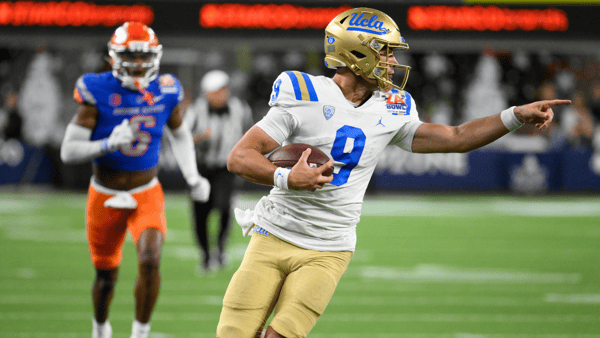

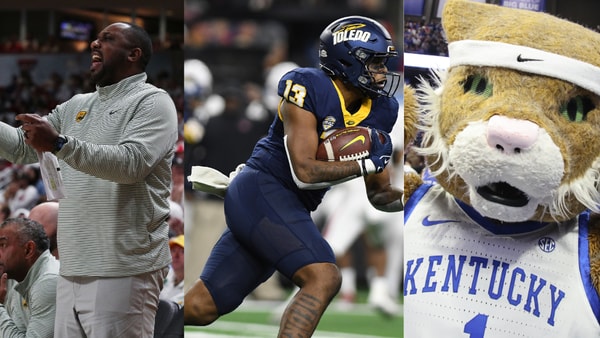
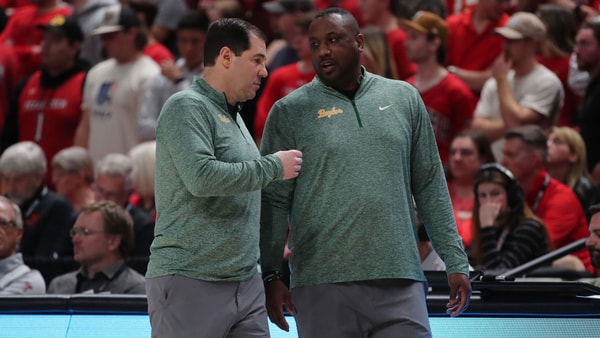
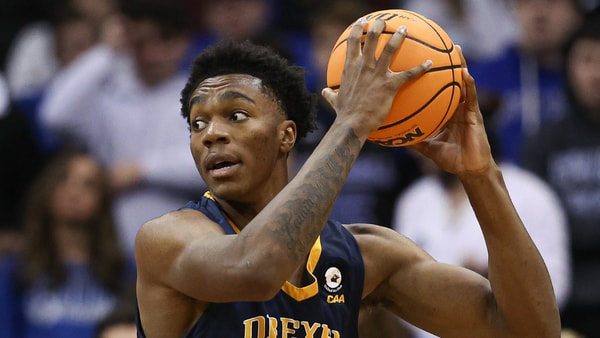

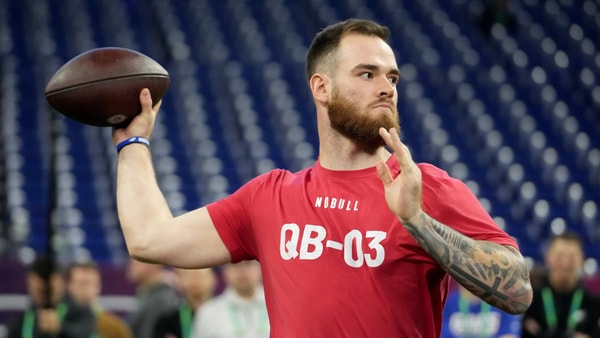
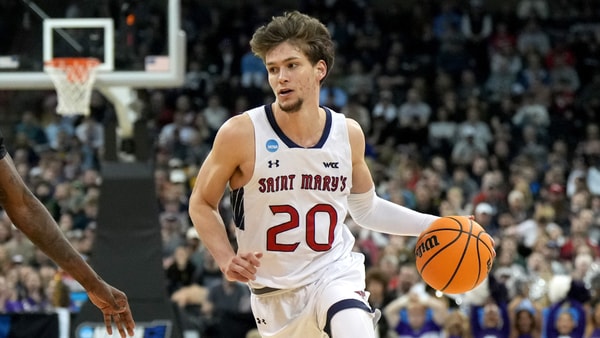
Discuss This Article
Comments have moved.
Join the conversation and talk about this article and all things Kentucky Sports in the new KSR Message Board.
KSBoard